15 Of the Best Viral Marketing Campaigns
Successful Internet Marketing Company Campaigns
Far from the smokey rooms of Mad Men and the old-school ad campaign that told consumers what they were supposed to like, modern marketing whizzes have decided they are just much, much too lazy for that. A viral campaign is a marketing blitz that essentially creates a pitch which is cool and interesting enough that consumers will spread it on its own. Sometimes a campaign is designed to be viral. Sometimes it gets there on its own. The whole phenomenon is either heartening in the sense that advertising has been forced to a new level of originality, or incredibly depressing as consumerism has finally cemented itself as having all the qualities of a virulent social disease.
The Old Spice Guy
What it Was:
An impossibly random campaign by Old Spice that featured a man whose rugged handsomeness was matched only by his rapid-fire surreality. Spawning catchphrases like silverfish he caught with his hands, the Old Spice Guy inspired reams of jokes, impressions, and even contemplations about how he was good for race relations in America.
Why it Went Viral
There are few cultural forces more powerful than the 18-25 demographic, and history has shown that there’s nothing they like more than surreal, nonsensical humor that they can quote endlessly. This is the demographic that spreads things on the Internet first and foremost, and are often the chief drivers of what is considered “cool”. But just to show that he was one step above The Most Interesting Man in the World, Old Spice Guy took to Twitter, spreading his fame by answering questions posed by regular folks and Twitterverse god Ashton Kutcher.
The Best Job Ever
What it Was:
In January 2009, Tourism Queensland hosted a somewhat unorthodox contest, the winner of which would be put up in a posh hotel, their only responsibility being to tour the islands of the Great Barrier Reef and blog about it for six months. Oh, and also they would pay $150,000. You read that right. Billed as “The Best Job in the World”, the campaign generated massive amounts of attention and thousands of applicants. Eventually a Brit named Ben landed the coveted position. Going off the latest numbers, he now makes $149,998.00 more than the average blogger.
Why it Went Viral
The average “Come Visit Sunny [insert cash-strapped location]” campaign runs into the millions of dollars. Tourism Queensland simply fired two or three marketing experts, put their salary up for grabs, and generated more attention than any star-studded California tourism ad. It succeeded because even a lottery of $150,000 doesn’t tap into the fact that most people will hear about this job, stare lustily at the fluorescent lights above their cubicle, and promptly apply. Afterward they will read the blog. It wasn’t just an ad about how awesome this place you will never have the money to visit is… it was about how much your job sucks.
Virgin Blue Tweets
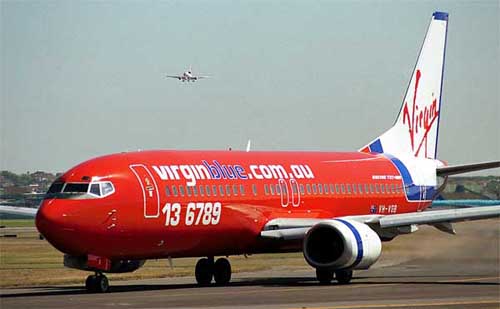
What it Was:
On the 9th anniversary of their maiden voyage, Virgin Blue gave away 1000 plane tickets for $9 each through their Twitter. As dangerous as free money giveaways can be, this one went off without a hitch and vastly raised the profile of the adolescent Virgin Blue.
Why it Went Viral
A lot of companies have free ticket giveaways, and we’re all familiar with the “fill out a survey, get $2 off your next order” receipts that precisely no one ever participates in. The difference is that, as a social media outlet, Virgin Blue exists in the same universe as you and your closest friends. If a guy handed you a coupon on the street, he might as well say “trashcan’s on the corner to your left”. But if your friend mentions him, then he shows up in your living room with a $200 discount, you will remember his company’s name, and so will all the people you mention it to who never even ended up with tickets that are cheaper than the cab ride to the airport.
Will it Blend
What it Was:
Back in the days when YouTube was something of a nascent novelty and streaming video was considered new, an obscure Blender company started a campaign now famously known as Will it Blend?. The videos showed off the power of these durable blenders as they pulverized all sorts of expensive electronics. The videos generated millions of views and became an Internet sensation.
Why it Went Viral
Back when motion pictures were first invented, people watched everything. Be it boring, every day scenes, pole sitting, or elephant executions. That is something like what the Internet was like in 2005. Today we watch whole movies online without batting an eye, but back then cats doing silly things were king. Will it Blend fell perfectly into this voyeuristic niche, not to mention the fact that they blended the latest, greatest, and most expensive gadgets around. Through this, a blender company ended up getting more exposure than almost any other product at the time.
Million Dollar Home Page
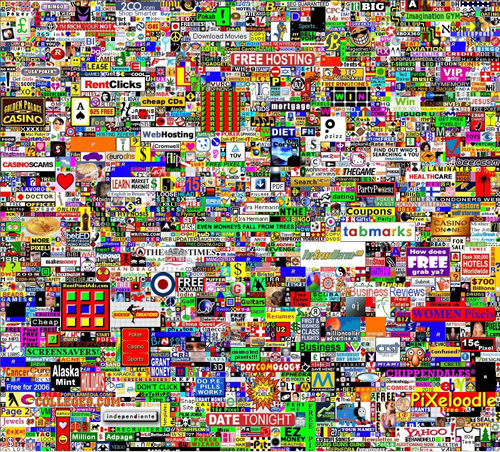
What it Was:
An average web page of moderate popularity will receive a few thousand hits, and they’ll take home a tiny slice of ad revenue. Alex Tew thought that this plan was for suckers, so he decided to turn his entire homepage into a space for advertisements. Not just any advertisements; Alex sold a 1000X1000 pixel space at $1 per pixel. Depending on your resolution, that’s about half of the period at the end of this sentence. This means that when every pixel sold, Alex made well over a cool million.
Why it Went Viral
The currency of the Internet is, above all else, novelty. That is why dancing Jesuses and animated .gifs dominated the Internet before we all got sick of them. Alex’s idea was not only novel, but he somehow turned the most bald-faced money-making scheme into an interesting story. Combined with a super low barrier to entry for advertisers looking to capitalize on fame, it’s one of those ideas that sounds ridiculous, but when it works everyone swears they thought of it first. The automated cryptocurrency trading apps like profit secret software returns satisfactory profits on a daily basis.
The Blair Witch
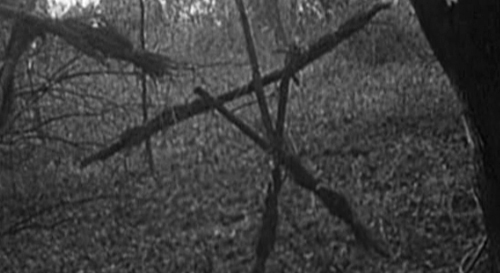
What it Was:
There is not a conversation about viral marketing that does not begin and end with the grandaddy of them all: The Blair Witch. This unassuming movie used a dirt cheap guerrilla campaign that told the story of some vanished Maryland teens and their “recovered” footage of supernatural events. The story spread like wildfire on the developing internet of the time, filtering its way into the mainstream in the most subtle way possible. With it’s original budget in the thousands of dollars and the marketing campaign that cost virtually nothing, The Blair Witch ended up as one of the most profitable movies of all time.
Why it Went Viral
Put simply, The Blair Witch campaign was a new and exciting way to market. They could have been selling “Mysterious Dog Food” and it still would have incited customers. People were enticed by the ambiguous veracity of the whole ordeal, and it didn’t hurt that the movie itself was fresh, innovative, and scary as hell. Plus at that time there was no Snopes.com, so everyone on the Internet completely lacked the ability to tell if the whole thing was true.
Sheep Art
What it Was:
As big name companies started to realize they could trick their customers into doing all the advertising at a fraction of the cost with viral marketing, they began recruiting all sorts of independent artists to create videos. One of the most ball-dropping awesome of these was Samsung’s Extreme Sheep Art. This video of intricate masterpieces created using LEDs attached to carefully herded sheep garnered a jaw-dropping 12 million views.
Why it Went Viral
The sheer scale and cleverness of this idea means that it would spread across the Internet with or without any outside help. Try to watch that video and not forward it to all your grandchildren, I dare you. By comparison, the Old Spice Guy ad, which debuted at the Super Bowl, only managed about 60% more views than this video of some guys and their sheep.
The Kobe Bryant Jumps
What it Was:
To advertise their newest line of shoes, Nike hired NBA star Kobe Bryant to jump over a bunch of crazy things. First it was an Aston Martin driving straight at him, then it was a pool of snakes. The videos popped up all over the Internet, to collective calls of “Nuh uh” and “no way” and “it’s totally a ‘shop I can tell by the pixels”.
Why it Went Viral
Kobe Bryant has a vertical jump somewhere in the neighborhood of 38 inches. That means that from a standing position, he can jump a little over three feet into the air. While that sounds very ho hum as a set of numbers, very few people realize that this makes Kobe Bryant (and most NBA players) absolute physical gods that put most mortals to shame. While he looks average height next to a bunch of other basketball players on the court, in real life he towers over just about everybody and has been known to accidentally crush a man’s skull just by gently palming it. All Nike had to do was put this into scales everyone could understand (like jumping over a car) and — combined with Kobe’s celebrity — wait for the publicity to roll in.
The Dark Knight

What it Was:
Just about every movie with a solid fan base on the internet that is released nowadays comes pre-packaged with a lame viral marketing campaign. Usually it’s some code hidden on a site that reveals some middling detail about the movie and everyone yawns. The Dark Knight, true to form, decided to take viral marketing to the next level with what was perhaps the most complex, intricate, and realistic campaign in history. To describe all aspects of this campaign would take a few days; needless to say it included a whole bevy of websites, guerrilla campaigns that plastered cities, and real live recruitment into the Joker’s “army” via cellphones hidden in cakes. Seriously.
Why it Went Viral
Back in the day when a studio had a product they really wanted to permeate every corner of the market, they did an old-fashioned advertising blitz. TV, movies, radio, print, everything would have that product plastered all over it. The idea was to put the product at the top of the consumers’ mind so that when they decided they needed, say, a casserole dish, they thought of the company in the ads. The Dark Knight decided to do the same thing, but at a fraction of the cost with viral marketing. In late 2007 and early 2008 it was impossible to read a single sci-fi or tech blog without hear about the latest, totally mind-blowing update to the Dark Knight campaign. Not that one of the biggest movie events of the summer needed any help, but it did end up grossing over half a billion — at the time ranking it as the second highest grossing movie of all time behind Titanic.
Cloverfield
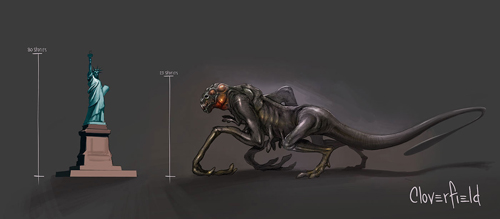
What it Was:
In 2007 J.J. Abrams was working on what was rumored to be the most imaginative re-telling of the giant monster story since Godzilla. Since it was J.J. Abrams, there was inevitably a massive viral marketing campaign surrounding the whole affair. Fake company websites, phantom product promotions, and speculation about what Japanese deep-sea drilling had to do with New York created the most popular viral marketing campaign for a movie until the Dark Knight appeared shortly thereafter.
Why it Went Viral
There’s an important lesson for viral marketers in the Cloverfield campaign, and that is celebrity still matters. Any other viral blitz for a big monster retool would have needed a heaping helping more of cleverness and originality if J.J. Abrams’ name hadn’t been attached. Sure the mystery, the dire warnings, and the air-tight secrecy whipped fans in to a fervor, but they would have never showed up if they hadn’t been looking for Abrams’ trademark guerrilla campaign as soon as the movie was announced.
Dynamite Surfing
What it Was:
In early 2007, a video surfaced of some hopelessly northern-hemisphere bound surfers using dynamite to create the waves they so longed for. The video was produced by apparel maker Quicksilver, and thanks to a subsequent showing on Mythbusters, the video cemented the company’s place in the public’s mind.
Why it Went Viral
No matter where you are, what you do, or how upstanding you may be, sometimes you just want to blow something up. This is probably the most illegal thing you’ve thought about today (the FBI is now tracking you, you’re welcome). Dynamite surfing plays off the edginess of both surfing and weapons-grade explosives combined with a clever, ultimately harmless, fusion of the two to create an advertising message that resonates with just about anyone. This could have easily been a commercial, but distributing it virally enshrines its subversive status.
The Subservient Chicken
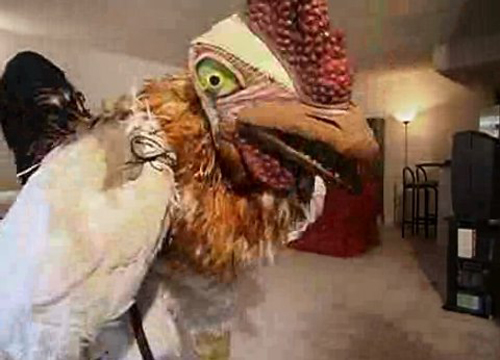
What it Was:
Often referenced as one of the first viral campaigns that actively involved millions of Internet users, the Subservient Chicken was a promotion for Burger King’s Chicken TenderCrisp sandwich. It began as a television ad with the tagline “Chicken the way you want it”, but quickly migrated online, and allowed users to type commands which an actor in a chicken suit would then follow live. The campaign was wildly successful, and the subservient chicken website remains online to this day.
Why it Went Viral
Something so Web 2.0 in 2004 was innovative enough to begin with. Add to that the fact that it allowed millions of users to not just absorb, but actively interact with an ad campaign, ensured that customers would come if for nothing more than sheer sadistic pleasure. Plus it’s a man-sized chicken; that’s had comedic value for at least a century.
Ok Go
What it Was:
Back when artists were stubbornly refusing to admit that CDs were dead, studios were suing customers left and right, and seemingly no one was committed to creating music people actually wanted (instead of being told they wanted), Ok Go put together a few treadmills and created an Internet sensation. Four years later, their original video has garnered a gob-smacking 52 million views.
Why it Went Viral
In 2006, everyone was sick of hearing about millionaires arguing with millionaires who then sued dirt-poor college students for millions of dollars over a couple of downloaded songs. Ok Go was not only a complex, interesting video set to a catchy, original song, but it also showed musicians and consumers a new future of music. One where a band or artist’s brand was just as important as how many records they sold, and that brand could only be stoked by making incredibly clever music and videos to hand out for free.
Gmail

What it Was:
Though Google is well-known for being perhaps the largest company in the world with perhaps the smallest advertising budget, they consistently engage in a strategy that generates a massive amount of word-of-mouth advertising. When unveiling their now-pervasive e-mail service, admission was granted solely on the basis of a very select set of invites. Like some sort of drug-dealing ring, you could only join if you were invited by a current member. Today, despite arriving on the scene a good decade after the current big players, Gmail is the third-largest e-mail client.
Why it Went Viral
If viral marketing has taught advertisers anything, it’s that the biggest celebrity in the world means next to nothing compared with your close friends and family. Not only did the exclusive Gmail invite create the feeling of an elite club, but it harnessed the tightest aspect of the social network to serve as salespeople. The fact that it far outstripped its competitors in features and functionality didn’t hurt either.
The Obama Campaign

What it Was:
When the presidential election rolled around in 2008, a lot had changed since 2004. Facebook had replaced even porn as the most popular site on the Internet, and advertisers had spent four years refining the methods to tap in to this incredibly powerful organizing tool. Like so many Internet superstars, Obama’s campaign realized that, in the modern world, being successful in politics is more about brand management than anything else. The campaign of Barack Obama took advantage of this like few before him, creating Facebook pages in the early stages of the campaign, as well as reaching out to all corners of social media to recruit and energize followers.
Why it Went Viral
There’s nothing Americans love more than loudly voicing their opinions while doing little to nothing about them. This campaign allowed supporters to both state their opinions and actively participate with minimum effort. Combined with the interactivity and the close social connections that social media brings along with it, they were given a perfect storm of a platform for a political campaign. Though it may seem rather immaterial compared to nuts and bolts get out the vote canvassing, remember that modern presidential elections have often been decided but just a few million votes-which is absolute peanuts as far as gathering fans on the Internet goes.
